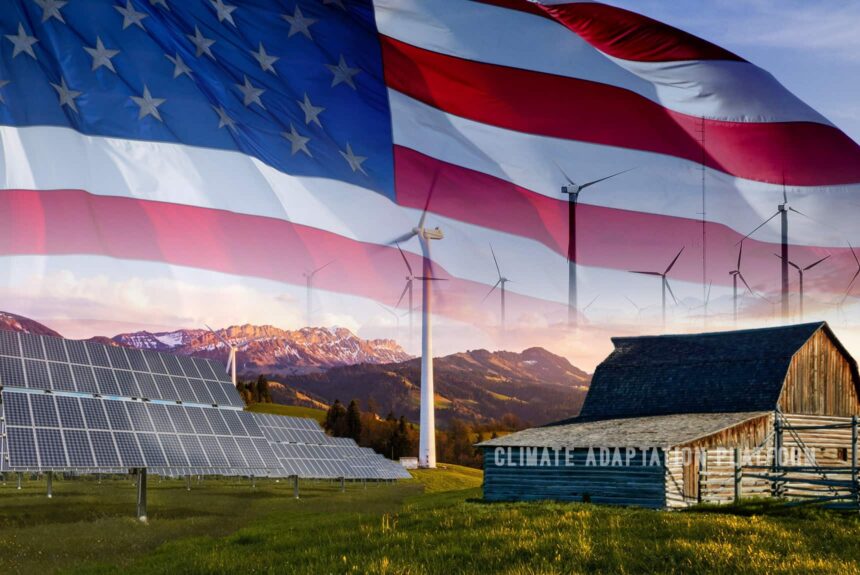For the US to finally wean itself from fossil fuels into clean and renewable energy, there should be a massive uptake of renewable energy infrastructure built on vast land areas.
The passing of the Inflation Reduction Act on August 2022, a landmark Federal law aimed to curb inflation while promoting clean energy, provides the single largest investment in climate energy in America’s history, directing nearly $400 billion in federal funding to clean energy to reduce carbon emissions by the end of this decade.
Most of this funding is in the form of tax credits to corporations to catalyse investment in clean energy, transport, and manufacturing (The Inflation, 2022).
The Bipartisan Infrastructure Law (BIL) passed on November 2021 has overlapping priorities with the IRA. Both legislation can turbocharge America’s transition from fossil fuels.
When it comes to renewable energy, the country has vast potential and resources to achieve its goal of decarbonising its economy by 2050, and its universities serve as innovation hubs. However, several obstacles could stall or prevent America from building the renewable infrastructure they need.
The Economist article “America needs a new environmentalism” discusses the country’s enormous potential, but conservationists are weaponising the country’s environmental laws to stall renewables from being built.
Wyoming’s gusty winds make the state an ideal site for a wind farm. There are already energy firms in the state that operates a suite of wind farms, with more investors eyeing to scale up wind farms in the state. The energy that will be produced from these wind farms would be more than the state can use, with a population of around 580,000. The state aims to move this harnessed clean energy to power California’s EVs, but before they could do that, investors would need to build high-voltage transmission lines across multiple states, which they have attempted to get signed off for decades.
Investors must go through multiple federal government agencies and satisfy environmental laws that could take several years before the project can break ground.
These world-leading laws and agencies created during President Richard Nixon’s term – EPA, National Environmental Policy Act (NEPA), the Clean Air Act, and the Endangered Species Act – are a result of learnings from past experiences. Through them, the Federal government must consider the environmental consequences before granting a permit for any development.
The article notes that the country has been exposed to the dangers of toxic chemicals, California’s central coast has had oil spills, and Ohio’s Cuyahoga River caught on fire. Hence, all these environmental laws and agencies are created to reduce pollution and protect and conserve the country’s natural resources.
The article states that these laws and agencies laid the foundation for modern American environmentalism, which focuses on preserving and conserving nature. Unfortunately, however, this kind of environmentalism has also been weaponised to stall or halt the construction of renewable projects.
According to a Brookings Institution report, building solar and wind farms would take ten times more land per unit of power produced from gas or coal. And for renewable energy to power the entire country by 2050, Princeton modelling shows that it would need a solar farm the size of West Virginia.
But constructing renewable infrastructure in large swathes of land could hurt biodiversity, which is crucial in fighting climate change. It is also impossible to build on the grounds that Native American tribes consider sacred. The “America the Beautiful” initiative aims to conserve 30% of the country’s land and waters by 2030, which is another restriction.
Lastly, the NIMBY (not in my backyard) movement could weaponise federal and state laws to prevent building. The article notes that California exemplifies the worst of NIMBYISM, but the state also makes the most progress.
America is on the cusp of its biggest renewable building boom, but there is no perfect place to build a wind or solar farm. The article notes that slashing emissions and transitioning to clean energy to stave off the worst of climate change will require trade-offs, but obstructionism will hurt everyone in the long run.
Source:
America needs a new environmentalism. (2023, January 29). The Economist. Retrieved from https://www.economist.com/united-states/2023/01/29/america-needs-a-new-environmentalism
The Inflation Reduction Act: Here’s what’s in it. (2022, October 24). McKinsey & Company. Retrieved from https://www.mckinsey.com/industries/public-and-social-sector/our-insights/the-inflation-reduction-act-heres-whats-in-it



Leave a Reply